Musik des Mittelalters und der Renaissance / Duo Mediterraneo
nach der heutenoch lebendigen Spielpraxis im Mittelmerraum
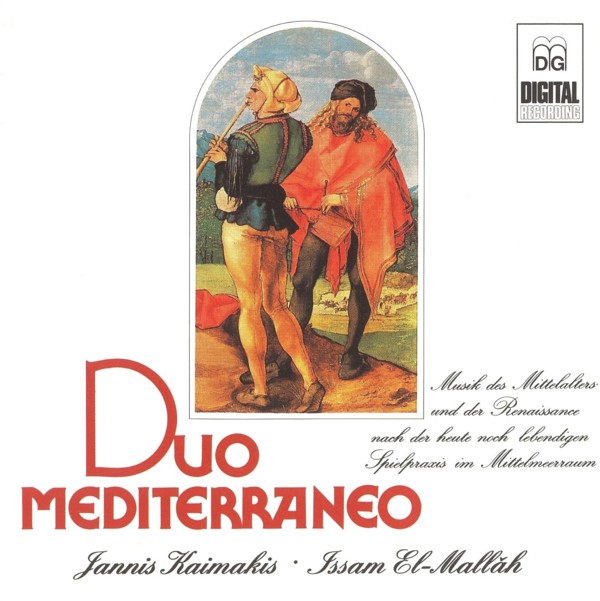
medieval.org
Dabringhaus und Grimm MD+G L 3225
1988
1. Improvisation über mittelalterliche Melodien [2:33]
Launeddas
2. La Ultime Estampie Real [2:53]
Paris, Bibl. Nat., ms. franc. 844, fol. 104v (13. Jh.) —
Piccolo-Blockflöte, Riqq
3. Tou Kastrou tis Orias, Tris Kalogeri Kritiki [4:29]
Griechische Volkslieder, Mündliche Überlieferung —
Flojera, Duff
4. Saltarello [3:08]
Hs. Lo Brit. Mus., Add. 29987 (14.-15. Jh.) —
Piccolo-Blockflöte, Bongos
5. Reigentanz aus Makedonien [3:49]
Mündliche Überlieferung —
Gaida, Tabla
6. Chanson à refrain [2:35]
Anonymus, 13. Jh. —
Panflöte, Bandir
7. Heinrich NEWSIDLER. Wascha mesa [3:37]
»Ein Newgeordnet Künstlich Lautenbuch« (16. Jh.) —
Renaissance-Laute, Taar
8. Trotto [2:01]
Hs. Lo Brit. Mus., Add. 29987 (14.-15. Jh.) —
Piccolo-Blockflöte, Taar
9. Istampita Ghaette [6:52]
Hs. Lo Brit. Mus., Add. 29987 (14.-15. Jh.) —
Tanbura, Bongos
10. Lamento di Tristano un Rotta [3:14]
Hs. Lo Brit. Mus., Add. 29987 (14.-15. Jh.) —
Krummhorn, Bandir, Riqq
11. Estampie [2:50]
Trouvère-Lied »Souvent suspire Moncuer« (12-13. Jh.) —
Piccolo-Blockflöte, Taar
12. Improvisation über arabische Rhythmen [4:44]
Bongos
13. Omorfoula [1:38]
Griechische Volkslieder, Mündliche Überlieferung —
Piccolo-Blockflöte, Riqq
14. Como poden per sas culpas [5:05]
CSM 166
virelai aus »Las Cantigas de Santa Maria« (13. Jh.) —
Gemshorn, Tabl-Baladi
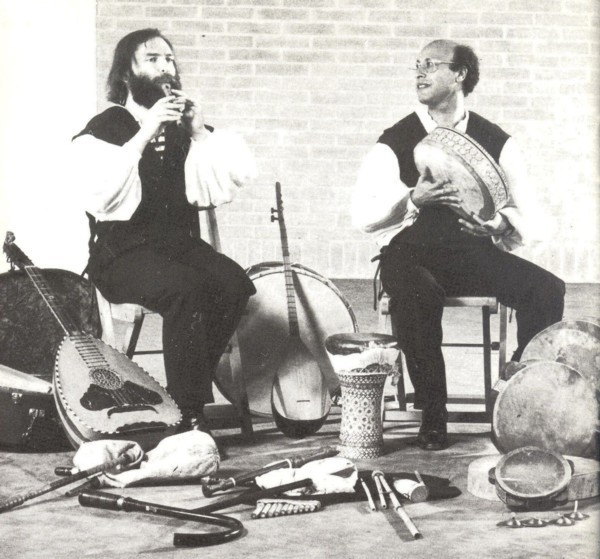
DUO MEDITERRANEO
Jannis Kaimakis · Launeddas, Piccolo-Blockflöte, Flojera, Gaida, Panflöte, Renaissance-Laute, Tanbura, Krummhorn, Gemshorn
Issam El-Mallâh · Riqq, Duff, Bongos, Tabla (Darabuka), Bandir, Taar, Tabl-baladi
Aufnahme: Schloß Nordkirchen am 3.7.1985
Text: Dr. Issam El-Mallah, Universität München
Titelbild: Albrecht Dürer: Pfeifer und Trommler · (Wallraf-Richartz-Museum, Köln) · Gestaltung: Peter Schulz
Aufnahmeleitung, Technik und Schnitt: Musikproduktion Dabringhaus und Grimm, Detmold
℗ 1988
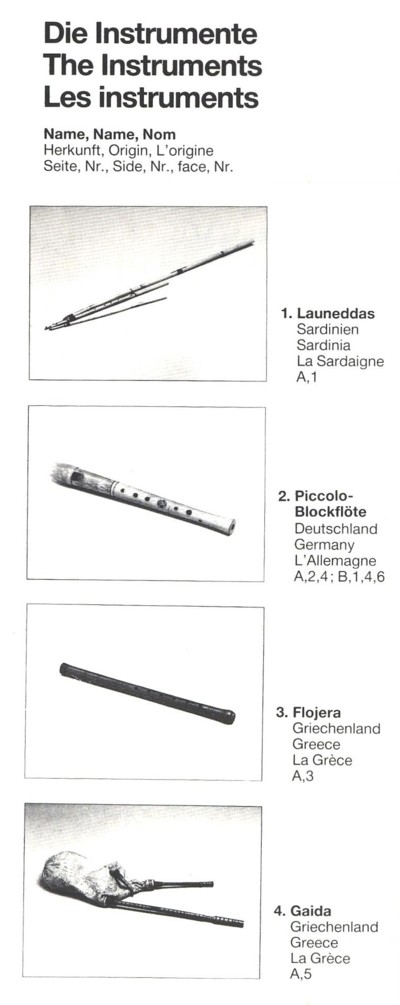 The interpretation of medieval-and Renaissance music:
The interpretation of medieval-and Renaissance music:
The
performance of medieval music presents a great challenge to the
musician. In contrast to modern scores the written notes do not give the
slightest indication towards their adequate performance. In many cases
only the basic outline of a melodic line is written down and needs to be
completed by the instrumentalist. Medieval notation did not provide
detailed instructions for its performance but served only to preserve a
basic sketch of the piece. The modern performer has here the rare
possibility to act not as a reproducing but as a creative musician and
to contribute an essential element to the piece. Whilst studying a
manuscript containing medieval dances one finds for example that the
scanty melodic line needs to be completed by improvising and that no
rhythm at all is recorded. Yet dance without rhythm is inconceivable.
The rhythm was so obvious to the musician of that period that it was not
written down but simply added to each performance. The written notes
therefore need to be completed by adding a rhythm instrument to the
ensemble.
This theoretical knowledge alone does not help much
further if one cannot find musicians who can perform the music itself.
The overwhelming majority of Conservatoire and Music Academy graduates
are trained to perform music written during the last 250 years, most of
them are therefore unable to make use of the creative possibilities
offered by medieval music. Musicians who grew up in southern- or in
non-european countries have a more intensive relationship to the nature
of a medieval musician. In Egypt, for example, a melody is still only
sketched in its basic outline even today, if it is written down at all.
The rhythm, although a vital element in Arabian music, is never written
down but is at the most implied by the type of piece sketched.
The Program:
The
selected pieces of music cover a period of 400 years, beginning with
the Middle Ages (13th century) up to the Renaissance (16th century).
Though an instrumental ensemble, the Duo Mediterraneo also plays vocal
music: vocal compositions are being interpreted instrumentally in
medieval minstrel manner. Thus, besides many a dance, you will hear a
virelai (B7/#14), a chanson (A6/#6), and a trouvére song (B4/#11). Some
Greek dances (A5/#5) and songs (A3/#3 and B6/#13) as well as a few
Arabian rhythms (B5/#12) demonstrate the parallelism between the Greek
and Egyptian style of performance on the one side and the European on
the other side.
The Duo Mediterraneo:
The Greek
Jannis Kaimakis und the Egyptian Issam EI-Mallah met at Munich
University where both were studying musicology. Since its foundation in
1900, the Munich Institute of Musicology is being concerned with studies
in the field of medieval music; particular emphasize is given to the
study of old music sheet and their interpretation. Through the studies
in Munich University and by their own experience in their native
countries Jannis Kaimakis and Issam El-Mallah discovered the parallelism
between life music execution in Egypt and Greece at present, and the
performance style that must have been practised in the Middle Ages. The
two musicians punctuate the rhythm with the percussion instruments and
colour the melody by vamping, just as this still is being done in their
homeland. They apply this Mediterranean practice when playing medieval
music, and this way of playing music underlines the minstrel character
of their performance.
The Duo Mediterraneo plays 20 different
instruments, mainly from the Mediterranean region where these
instruments still have not lost their function in cultural life.
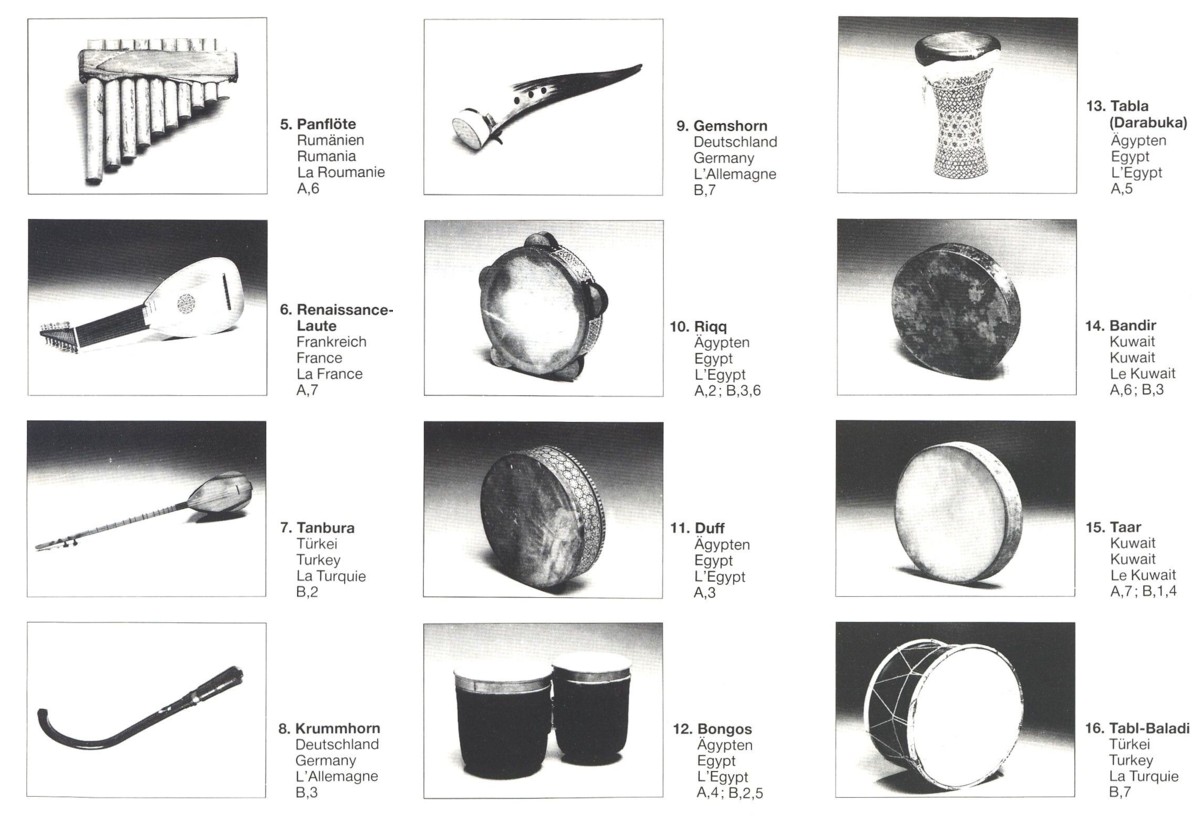
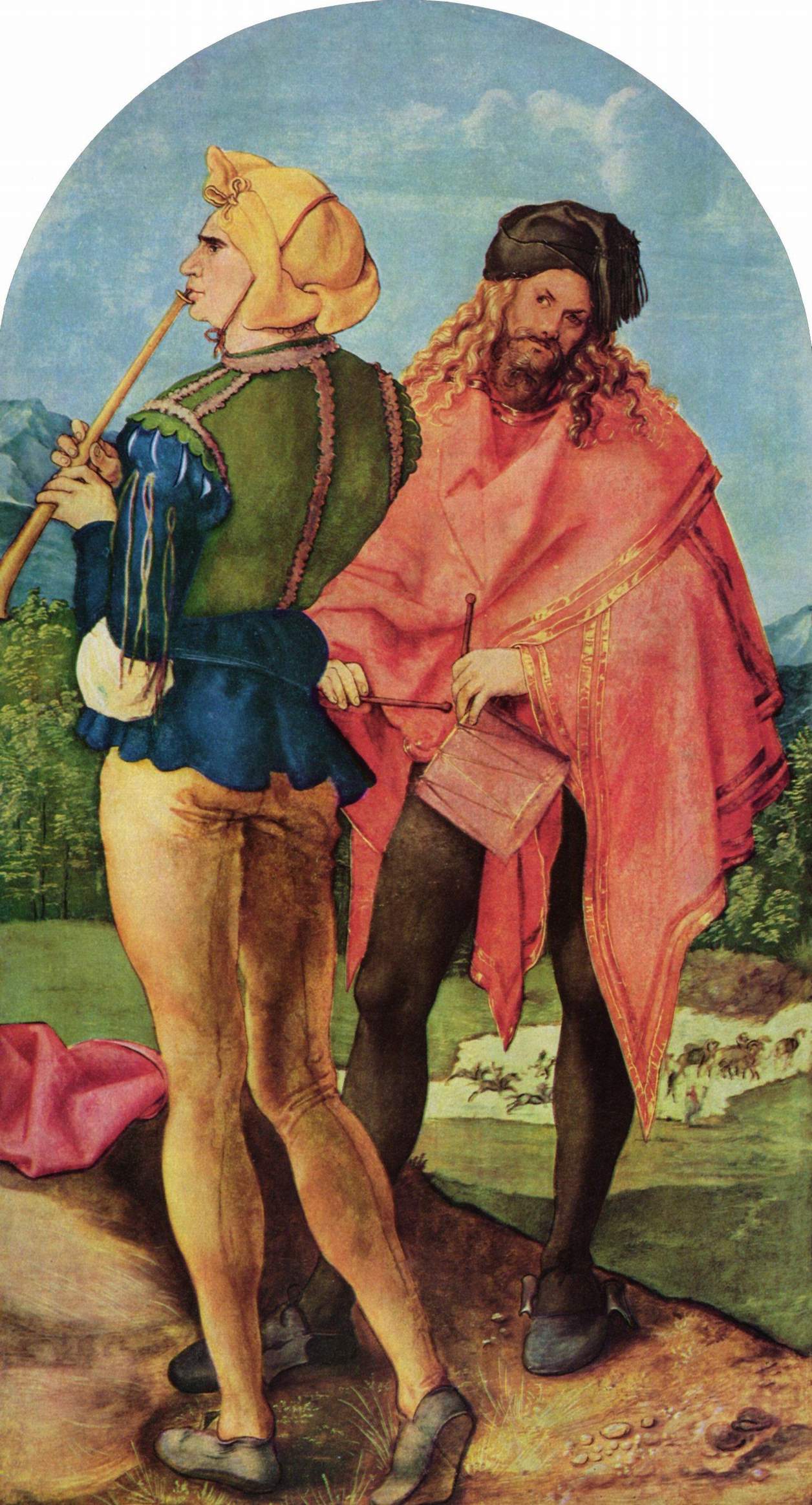


 The interpretation of medieval-and Renaissance music:
The interpretation of medieval-and Renaissance music:
